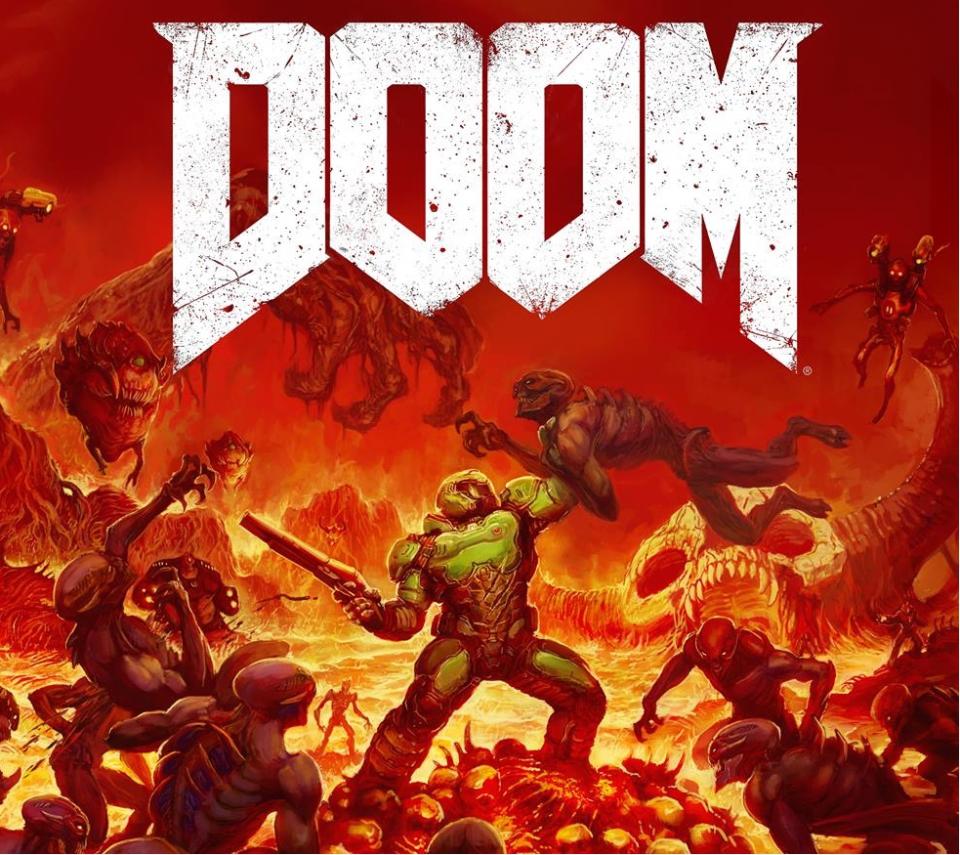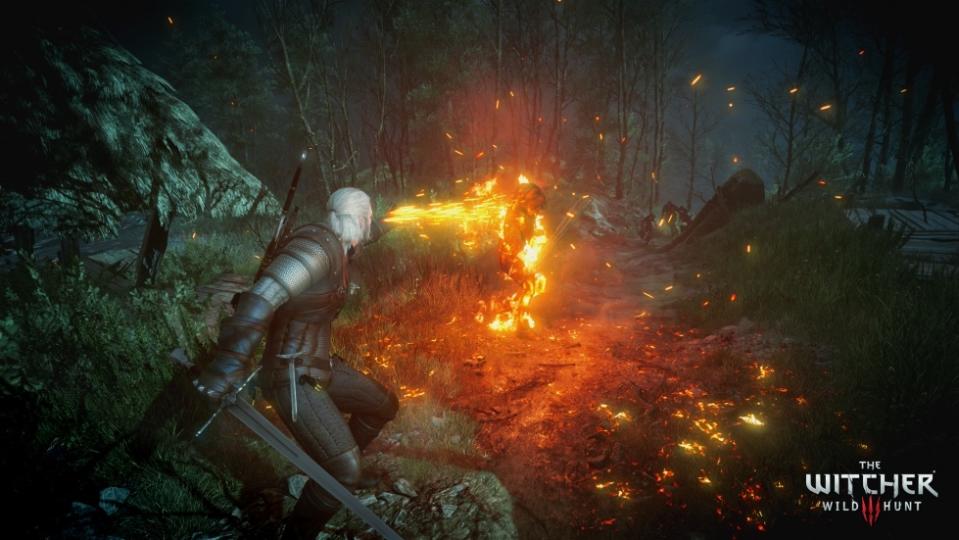Despite Trump's meeting, video games and violence still don't add up
President Donald Trump met with members of the the video game industry and interest groups on Thursday to discuss the issue of video games and their potential impact on real-world violence. And while the meeting was closed to the press, we have a good idea of how the event went.
According to The Washington Post’s Tony Romm, Trump opened the meeting with a montage of scenes from M-rated games, those that are labeled for gamers 17 and older. The scenes included images from games ranging from “Call of Duty” to “Sniper Elite,” with special attention paid to the more over-the-top shots of virtual violence. In fact, the White House released the clip with a disclaimer about its content.
The meeting comes on the heels of the shooting at Marjory Stoneman Douglas High School in Parkland, Fla. during which Nikolas Cruz shot and killed 17 people. In the aftermath of the attack, Trump attempted to make a connection between that kind of real-world violence and video game violence.
Attendees included the executives of companies including Take-Two Interactive (TTWO), which publishes the “Grand Theft Auto” and “Red Dead Redemption” series, as well as ZeniMax Media, which owns the publisher of games like the “Fallout” series, Bethesda Softworks. On the other end of the spectrum were representatives for the right-leaning Media Research Center and Parents Television Council.
“We welcomed the opportunity today to meet with the president and other elected officials at the White House,” the Entertainment Software Association said in a statement following the event.
The ESA is the trade group that represents many of the gaming industry’s developers and publishers and puts on the annual Electronic Entertainment Expo (E3) each year where company’s debut their latest titles.
“We discussed the numerous scientific studies establishing that there is no connection between video games and violence, First Amendment protection of video games and how our industry’s rating system effectively helps parents make informed entertainment choices,” the statement continued. “We appreciate the president’s receptive and comprehensive approach to this discussion.”
Brent Bozell, of the conservative Media Research Center, said that the meeting “went terrifically well,” and that it was “very productive.”
Melissa Henson, from the Parents Television Council, meanwhile, said that the event offered constructive dialogue and proved helpful as it gave parents a place at the table alongside government officials and industry representatives.
Both Bozell and Henson said they believe the meeting was the first of what could be additional sit downs to discuss the issue of violence in various forms of media. But according to psychologists, the decision to focus on a link between video game violence and real-world violence is likely nothing more than a politically motivated waste of time.

Violent games and violent behavior
“There is very clearly no evidence to suggest that violent video games or violent movies or violent television contribute to violent crime,” said Stetson University psychology professor and expert on video game violence Chris Ferguson. “That seems to be, at this point, the consensus view among a majority of scholars.”

The ESA has a ratings arm called the Entertainment Software Ratings Board, or ESRB, which provides content ratings for games that are clearly displayed. Ratings run from “Everyone,” “Everyone 10+” and “Teen” to “Mature” and “Adults Only.” Rating labels also include content descriptions such as “comic mischief,” “mild language” or “intense violence.”
Bozell, however, believes that ratings aren’t enough. Instead, he said he believes violent video games should be regulated similarly to cigarettes, alcohol or even guns.
The idea that violent video games leads to or influences individuals to commit violent acts has been circulating for at least as far back as the Columbine High School shooting in 1999 when Dylan Klebold and Eric Harris killed 13 people before committing suicide. At that point, the discussion revolved around whether the perpetrators were influenced by the game “Doom.”
Nearly 19 years later, the topic is still being discussed. But much has changed in terms of research since then, with experts arguing that no link exists between violent video games and societal violence like school shootings.
“The Media Psychology and Technology Division of the American Psychological Association released a statement last year [2017] asking news media and politicians to stop making those types of claims, very specifically,” Ferguson added.
“This is absolutely a dead end and I think it’s a pretty blatant political move to try to bring it up,” Ferguson said.
Violence versus aggression
The American Psychological Association’s official stance on video game and media violence as it relates to real-world violence is that playing video games can lead to increased aggression, but that there is insufficient evidence to form a link between gaming and violence.
While Ferguson believes that even that issue is up for debate, Patrick Markey, a psychology professor at Villanova University says he believes such a link between playing violent games and increased aggression exists, but that it doesn’t equate to the kind of violence that occurred in Parkland.

“I think when we look at the research linking violent video games to horrific acts of violence like school shootings, homicides, aggravated assault, most of the research with those types of acts of violence suggests that there’s either no link, or it actually goes in the opposite direction from what we typically expect,” Markey said.
As far as aggressive acts, Markey explained that those could include laboratory tests in which a person played a violent game and was then asked to give hot sauce to a person who doesn’t like spicy food, or blast an annoying white noise for another individual.
“That there’s this very tiny causal relationship, I think it’s real,” Markey said. “But i think it’s really important to remember that it’s only temporary. It only lasts right after they are done playing the video game and it’s very minor.”
Markey said this increase in aggression is similar to a person feeling depressed after watching a sad movie, but then rebounding shortly thereafter.
“They are not becoming clinically depressed, it’s not changing who they are. And violent video games are doing the same thing. They are temporarily changing our mood, it’s not fundamentally changing us as people,” he said.
The American Psychological Association’s 2015 Resolution on Violent Video Games takes into account the kind of aggression Ferguson and Markey talk about, as well as “self-report questionnaires, peer nominations and teacher ratings of aggressiveness focused on behaviors including insults, threats, hitting, pushing, hair pulling, biting and other forms of verbal and physical aggression.”
The problem, the resolution indicates, is that throughout various studies there is never any clear definition between aggression and violence, which means researchers have trouble figuring out what kinds of behaviors subjects actually express.

As Ferguson notes, the APA’s resolution was met with a great deal of controversy when it was released in 2015. An international group of some 230 scholars and experts in the field tried to persuade the APA not to publish its piece based on their collective belief that its findings were inaccurate and used weak or misleading evidence. They also claimed that the kind of meta-analysis used to craft the resolution could prove misleading.
Interestingly, both Ferguson and Markey point to the fact that while video games often come up in the wake of school shootings and similar incidents, school shooters actually play fewer games than the average adolescent male student.
“People who are average high school students are about three times more likely to play violent video games than school shooters,” Markey said.
“I think it’s important to point out though that nobody thinks that it’s because not playing violent video games causes you to be a school shooter,” he explained. “Probably the more likely explanation is simply that playing violent video games is a very normative activity for adolescent males. Again, most adolescent males are doing it.”
In other words, school shooters would display aberrant behavior compared to your average high school student. What’s more, the motivations and psychology of a mass shooter aren’t influenced by a single factor. A person’s mental state is the result of multiple inputs over their lives.
It’s important to note that neither Henson and Bozell say they believe violent games are solely responsible for incidents like the Parkland shooting. “It would be sheer nonsense to say that if someone watches a violent video game he will commit murder. That doesn’t make a lick of sense,” Bozell said.
America first
The problem with linking gaming and violence, though, is that mass shootings are a uniquely American phenomenon. And since gaming is an international medium that shows no indication of waining in popularity, you’d expect that other countries outside of the U.S. would see a similar rate of such incidents. But that’s just not the case.
In fact, two of the countries with the highest number of gamers, The Netherlands and South Korea, are among the least violent in the world.
The entire conversation about video game violence and school shootings, however, could become moot when the investigation into Cruz and the Parkland shooting comes to a close.
Ferguson says similar claims about video games and violence were made in the aftermath of the Virginia Tech shooting in 2007 and the Sandy Hook shooting in 2012. But when the investigations were completed, neither perpetrator was found to be very interested in violent games.
Indeed, both Henson and Bozell inaccurately claimed that school shooters were obsessed with violent video games.
Seung-Hui Cho, the Virginia Tech shooter, was more interested in games like “Sonic the Hedgehog,” while Adam Lanza, the Sandy Hook shooter, primarily played “Dance Dance Revolution.” Neither title could be considered violent. Both games are rated “Everyone 10+.”
“This is really scientifically a dead issue,” said Ferguson. “It’s very clear at this point that the data does not suggest that violent video games contribute to societal violence.”
More from Dan:
Vero is the anti-Facebook social network everyone is talking about
Sony’s PlayStation Vue just became an even better cable TV killer
Samsung’s Galaxy S9 and S9 Plus bring major camera improvements
Email Daniel Howley at [email protected]; follow him on Twitter at @DanielHowley.
Follow Yahoo Finance on Facebook, Twitter, Instagram, and LinkedIn
